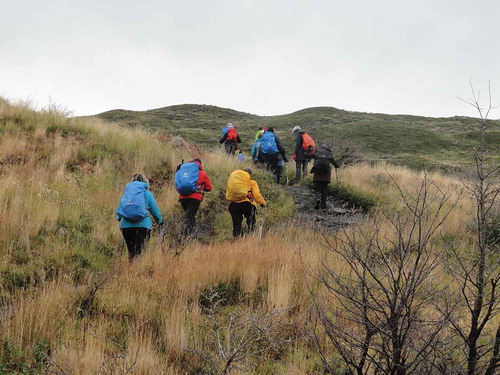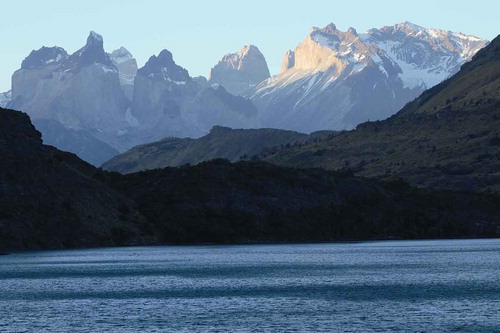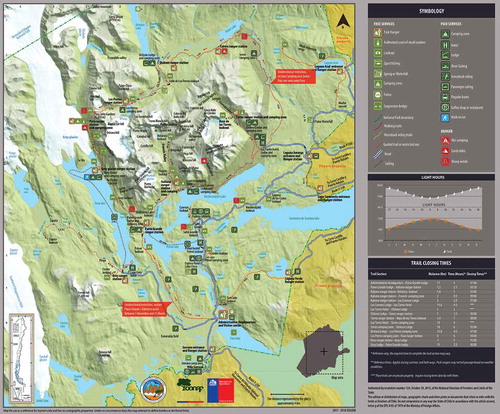Figures & data
Figure 4. Group of tourists trekking in the trail section Paine Grande – Italiano ranger station.
Source: CONAF.

Figure 2. Protected Areas in the Region of Magallanes and Chilean Antarctica. (a) Shows public and private protected areas in Southern Patagonia. (b) Shows the National Park Torres del Paine and the projected expansion of the Biosphere Reserve Site, including core (public protected areas), buffer and transition zones. (c) Shows Chilean Southern Patagonia in South America.



